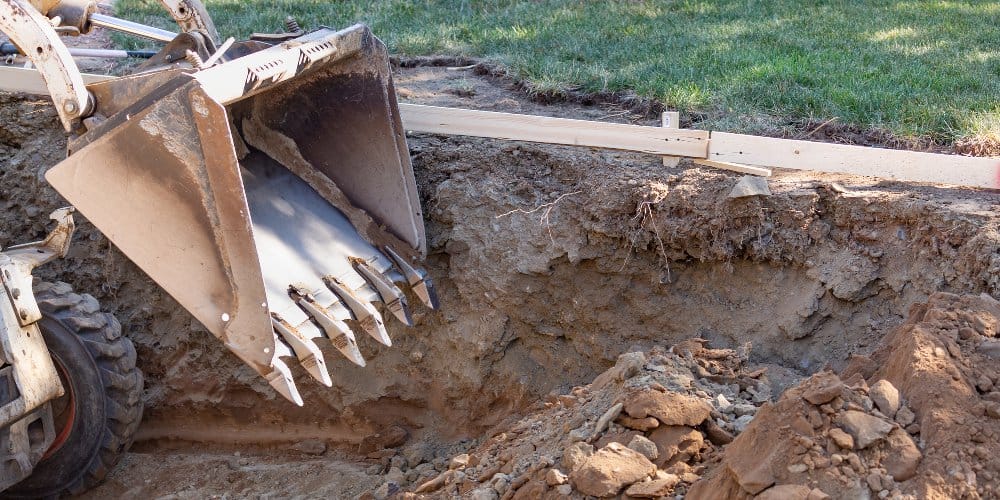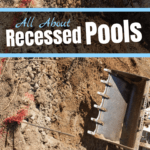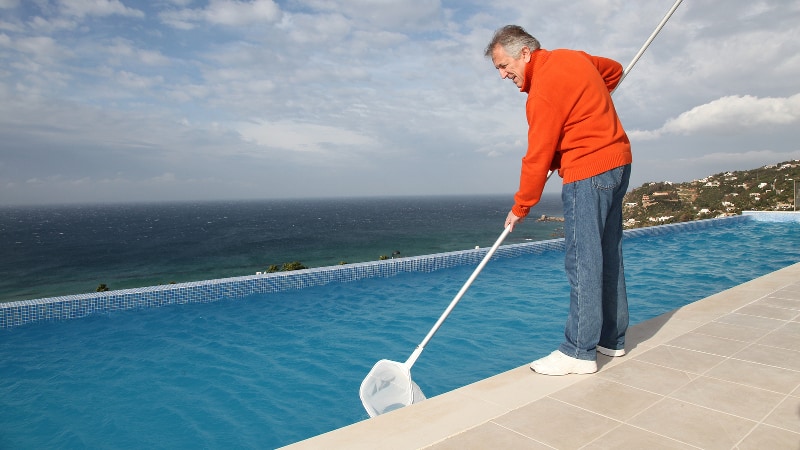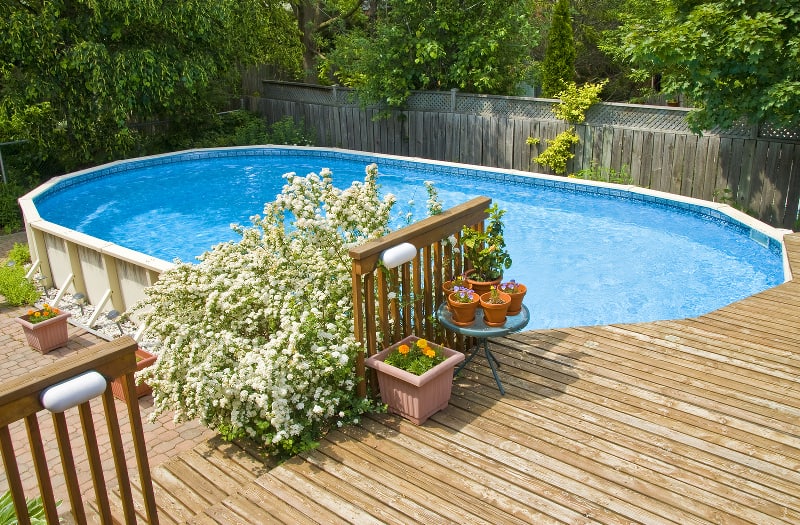
What do you do when your tastes are inground, but your budget is above ground? That’s the problem a lot of people face when they contemplate getting their own backyard pool. As a result, many homeowners consider all sorts of options in an attempt to get the inground pool experience without paying the inground pool price.
It’s even prompted people to wonder if they can simply bury an above ground pool. While improvising your own cheapo inground pool in this way might seem like a stroke of genius, it’s actually not a good idea for a variety of reasons. However, there’s one big exception, and that’s when we’re talking about recessed pools.
What is a Recessed Pool?
Recessed swimming pools are above ground pools that are specifically designed to be buried in the ground. They’re offered by above ground pool companies like Doughboy and Kayak, and are sometimes referred to as “recessed above ground pools.” That’s a bit of a misnomer, however, because if we’re talking about a recessed pool, the final product is most definitely inground or semi-inground.
In other words, this isn’t quite the same thing as taking any old above ground pool and dropping it in a hole. It’s more akin to a fiberglass pool installation, where a prefab pool shell is buried and backfilled. A recessed pool is constructed with materials that can hold up to being buried – that is, as long as you follow the installation instructions provided by the manufacturer.
It’s worth repeating that not all above ground pools can be recessed in this way. Furthermore, not all pools that can be recessed can be completely buried. Some are only designed for semi-inground installation. When shopping around, it’s important to understand exactly what you’re getting.
Advantages of Recessed Pools
The big selling point of recessed pools is – you guessed it – cost. A recessed pool is generally much cheaper than a comparable concrete or fiberglass pool. That’s especially true if you can do all or some of the installation yourself – and with this type of pool, self-installation is much more viable.
Recessed swimming pools also offer advantages over traditional above ground pools. The most obvious one is that they have that low profile look of an inground pool. Most people prefer this to the often-maligned looks of an above ground pool, which can actually lower your property value.
Recessed pools can also be built into a sloping yard, semi-inground style. This is a big deal for homeowners who have trouble finding a flat patch of land for an above ground pool, as well as those who simply want more placement options.
Disadvantages
Recessed pools represent a compromise between the stunning looks of an inground pool and the affordable price of an above ground pool. However, not everyone will find the compromise appealing. For a variety of reasons, a conventional inground or above ground pool is often a better choice.
For one thing, above ground pools that can be recessed are still relatively uncommon. As a result, you may have a hard time finding one that has the shape, size, and features you’re looking for. In contrast, a custom inground pool can take any form you want, and there are fiberglass shells and above ground pools in just about every style you can imagine.
Also, while recessed pools allow you to avoid many of the costs of inground pool installation, you’re still on the hook for excavation. As a result, a recessed pool typically costs significantly more than a standard above ground pool. You may find that putting attractive decking around an above ground pool is a better, more cost-effective option than putting it underground.
Inground. Semi-inground. Above ground. We’ve covered a lot of ground in this article. And we’ve just scratched the surface. Like any other type of pool, a recessed pool comes with lots of pros and cons – and only you can decide whether getting one is right for you.







